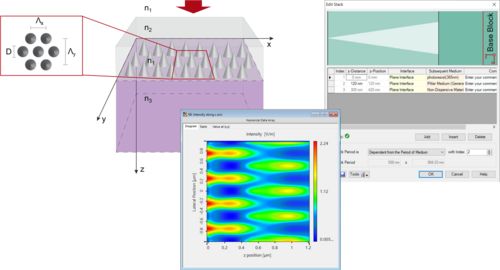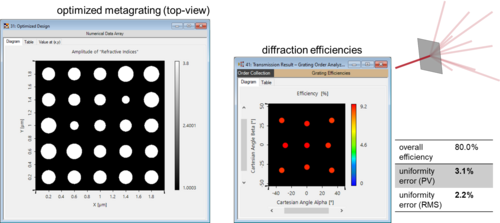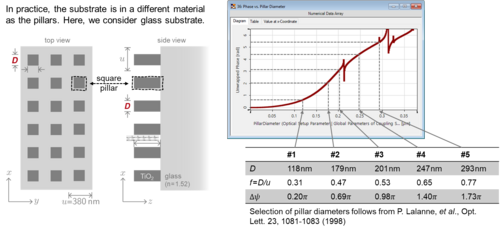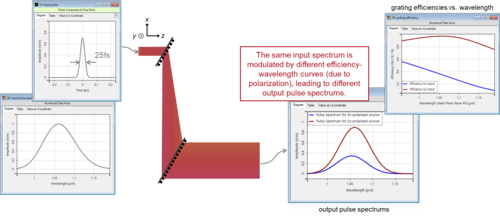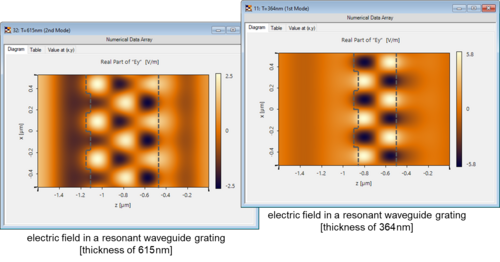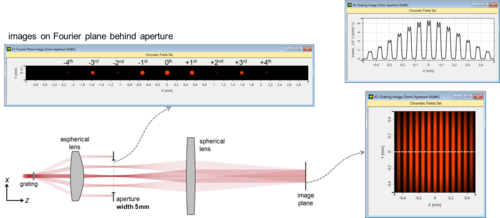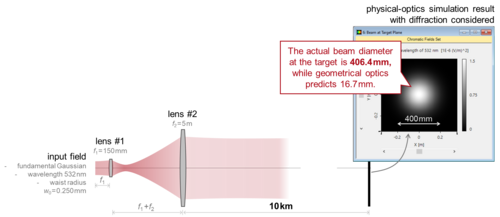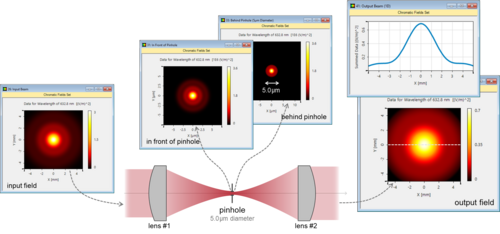What’s new in our Optical Modeling and Design Software?
Talbot Lithography
The Talbot effect, as one of the most well-known diffraction effects, can be used in lithography to produce periodic nanostructures. Following the work of I.-H. Lee et al., we construct a conical grating mask on a hexagonal grid, and simulate the generation of Talbot images in a depth-wise manner. Particularly, since the UV light employed in the lithography process is unpolarized, we demonstrate, at examples, how to model unpolarized light for grating simulation in VirtualLab Fusion.
Read moreMetagratings for Large-Angle Beam Splitting
Dot-projection optical elements can be found in an ever-growing number of devices, like in the LiDAR of Apple’s new iPad Pro with depth-detecting capability. A beam-splitting grating plays a crucial role in these applications, and the design of such gratings for non-paraxial cases is challenging. Metagratings, because of the unique way in which a nanopillar manipulates the electromagnetic field, can provide additional design possibilities. We demonstrate how such gratings can be constructed, modeled, and optimized in VirtualLab Fusion.
Read moreBlazed Metagrating Design
Metagratings and more general metasurfaces are starting to draw ever more attention in different applications. They are known for maintaining a high diffraction efficiency in non-paraxial situations. Polarization-insensitive designs are possible with an appropriate selection of the types of nanopillars as the unit cells for the metagrating. Following the work of P. Lalanne et al. – pioneers in the field of metasurface research – we construct a blazed metagrating and optimize it in VirtualLab Fusion.
Read moreHighly Efficient Gratings for Ultrashort Pulses
Ultrashort pulses prove helpful in many modern applications. To manipulate ultrashort pulses, especially for high-power cases, gratings are often employed to either stretch or compress the pulses. The design of such gratings needs careful consideration: they should maintain high efficiency over a spectrum band, and sometimes even for random polarization. In VirtualLab Fusion, you can design gratings using FMM/RCWA, insert the gratings into a setup with pulsed laser sources for system performance evaluation. We demonstrate with the examples below.
Read moreAnalyzing Resonant Waveguide Gratings
Resonant waveguide gratings are used for various applications due to their sensitivity to wavelength and polarization. We pick an example from the work of G. Quaranta et al. and analyze its diffraction properties in VirtualLab Fusion. Additionally, we investigate the angular selectivity/sensitivity of the selected resonant waveguide grating, and visualize the diffraction pattern behind it.
Read moreDemonstrating Abbe’s Resolution Theory
How to resolve better is one of the most important, and most prevalent, question in optics. Ernst Abbe gave his explanation on resolution in 1873 and his theory has played a role to this day. As was done first by Abbe, and then by many other scientists in their labs, we will demonstrate the theory of resolution in VirtualLab Fusion. Thanks to the grating component released in version 2020.1, we build up an imaging system with real chromium gratings as the object, and demonstrate the image formation throughout the system.
Read moreAfocal Systems for Laser Guide Stars
Laser guide stars – which are artificial “star” images tens of kilometers away – are important for the correction of atmospheric distortions for astronomical telescopes. The size of the star must be carefully controlled, and the slow-diffraction effect must be considered in the design so as to correctly predict the focal spot. We analyze and design such systems in VirtualLab Fusion and show how to configure the Fourier transform settings for such tasks.
Read moreBeam Clean-Up
It is often important to ensure good beam quality for many laser-based optical experiments and applications. Laser beams, in reality, may contain higher-order modes or exhibit wavefront perturbation, and consequently need to be cleaned up. A typical method is to use a spatial filtering setup, with two lenses and a pinhole in the intermediate focal plane, i.e. the Fourier plane. We build up such a spatial filtering setup and check how the pinhole size influences the output beam quality and power.
Read more



